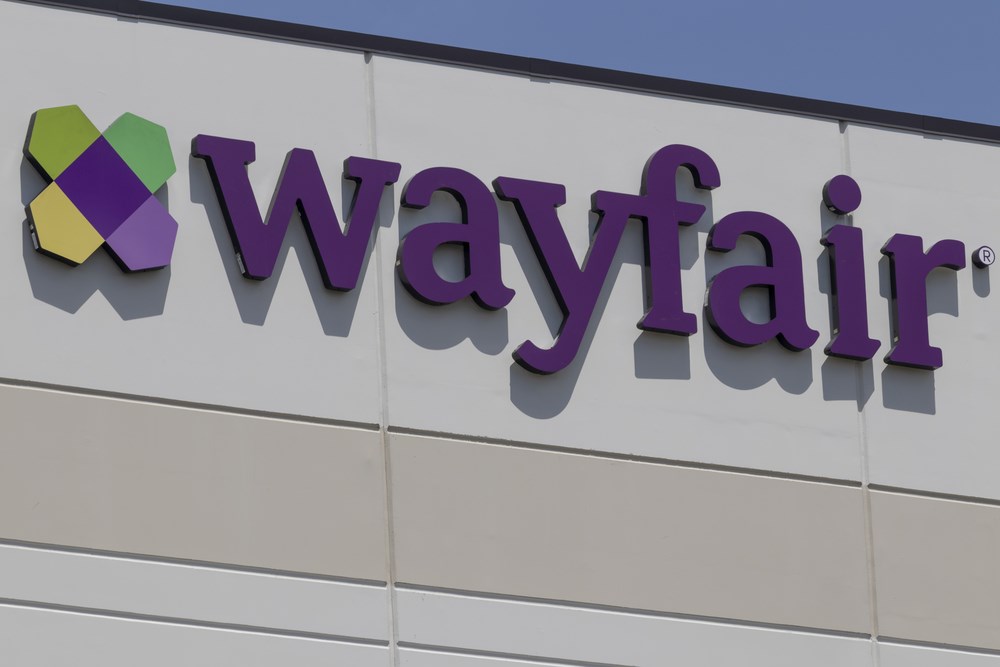
Thanks to better-than-expected first-quarter results, Wayfair, Inc. (NYSE: W) is off to a hot start this summer. The home furnishings retailer has surged more than 40% since its May 4th report, while the S&P 400 mid-cap index has advanced a mere 1%. It is on pace to finish higher for the third consecutive month, something that hasn’t happened since early 2021 when the company rode a pandemic e-commerce boom to $369 per share.
Trading back in the $ ’40s, Wayfair is looking like a ‘comeback of the year' candidate — but there’s one problem. The stock has traveled too far too fast.
Typically when a company enjoys a big run, industry peers enjoy similar uptrends. Expectations of repeatable success and pure sympathy drive investors to bid up stocks that operate in the same business. However, with the Wayfair rally, this hasn’t been the case.
Wayfair is now up over 30% year-to-date. Fellow home goods retailers Williams-Sonoma and RH are up 3% and down 6%, respectively. Small-cap peers Arhaus and Sleep Number are each down more than 20%. For Wayfair to be way ahead of competitors that face the same industry dynamics, it must be doing something far superior, right? Nope.
An illogical performance disparity is just one reason why this summer sizzler is overheated. Here are a few more.
#1 - Economic Challenges Remain
The U.S. housing market sorely needs renovation. In the week ended May 26th, mortgage applications for home purchases were 31% below where they were during the same week of 2022. The decline coincides with rising mortgage rates that, even with lower home prices, are proving too much for Americans to overcome.
The average rate on a 30-year fixed mortgage is the highest it's been since November 2022 and threatening to climb back above 7%. And with recent economic data releases mostly strong, it doesn’t appear the Fed will be lowering interest rates anytime soon.
This is a bad backdrop for Wayfair and other home furnishing retailers that depend heavily on housing market activity. High mortgage rates and high prices on food and other staples are leaving little discretionary money for furniture, home decor and housewares. Until there are signs of sustainable inflation relief for homebuyers, Wayfair’s business will operate at substandard levels.
#2 - Technicals Suggest Overbought Conditions
Wayfair’s daily chart reveals a mix of bullish and bearish developments. On the bullish side, the stock has regained its 200-day moving average. However, with trading volume below average in recent days, the move is less than convincing. If a volume pickup were to coincide with a 50-day/200-day crossover, aka a ‘life cross,’ this would be a clear bullish signal. Until then, this has the makings of a head fake.
At approximately 70, the relative strength indicator (RSI) isn’t sky-high but it is approaching overbought territory. The more telling indicator is the Bollinger Band. Wayfair’s push above $40 has pushed it above the upper band, an area that has historically marked imminent downturns. The last two times the upper Bollinger band was breached (August 2021 and January 2022), sharp corrections followed. In this instance, a near-term correction to the $30 to $35 range wouldn’t be surprising.
The wild card here is that Wayfair is one of the most heavily shorted stocks on the NYSE. Roughly one-third of the float is in the hands of short sellers, and the past month’s move has likely been accelerated by short position covering. If the social media chatter gains momentum, a full-blown short squeeze that defies normal technical bounds wouldn’t be out of the question.
#3 - Sales Are Trending Lower, Profitability Years Away
Back to the fundamentals. Although Wayfair beat top and bottom line expectations in Q1, the sad reality is that revenue has decreased for eight straight quarters. Unless this trend reverses, it's hard to see the big institutional players getting on board with this turnaround play. Six straight quarters of steep net losses is also a hard pill to swallow for fundamental investors.
With the company not expected to return to profitability until at least 2025, the enterprise value-to-sales is a good way to value the stock. Wayfair’s 0.65 EV-to-sales ratio appears to make it a bargain, especially relative to mid-cap peers Williams-Sonoma and RH, which boast significantly higher multiples. But it's a valuation that’s at least fair and arguably high considering Wayfair’s declining sales, lack of profitability and highly leveraged balance sheet.
The current $50 consensus price target on Wayfair implies another 11% upside. But given the macro headwinds and weak fundamentals, analysts may be giving the company way too much credit for delivering ‘better-than-feared’ Q1 results.





